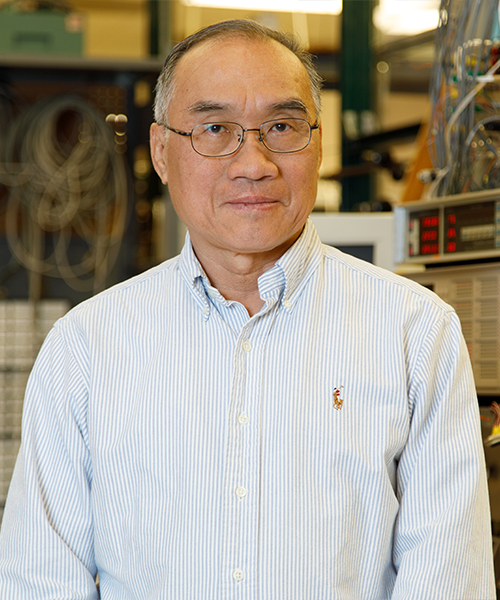TcSUH EventS
Special Seminar
Nanoscale Magnetic Recording
by: Dr. Dimitri Litvinov
Date: Friday September 05, 2003
Time: 12:00 pm – 1:00 pm
Location: Houston Science Center – Building 593 — Room 102
Overview
Magnetic recording is rapidly shifting into the realm of nanoscale technologies. At 1 Terabit/in2, the size of a recording bit is 50x13nm2 (assuming 4:1 bit aspect ratio.) To store such small magnetic features, the characteristic dimensions of all supporting recording system components have to be shrunk correspondingly. The read/write transducers are being scaled down into 40nm range. The characteristic size of the smallest magnetic feature in a recording medium is being refined to hit the 5nm mark. The flying height of the recording heads is targeted to be a few nanometers at the most. The servoing capabilities of the tracking system are being optimized for the capability to position a recording transducer on a 3.5†diameter media disk with a precision of 10nm in a fraction of a millisecond. This presentation will review the major critical issues related to the recording physics, device fabrication, and system integration at nanoscale. The prospects of extending magnetic recording technologies above Terabit/in2 range as well as alternative approaches to data storage and retrieval will be discussed. Among the open issues critical to the development of nanoscale probe recording is the ability to fabricate magnetic transducers with the dimensions in the nanometer range as well as the detailed understanding of the recording physics of such nanomagnetic devices. Magnetic probe heads with a cross-section of 60x60nm2 were successfully fabricated using focused ion-beam (FIB) processing. The ability of such probe heads to controllably conduct magnetic flux is critical to the performance of a recording system. The results of both experimental and theoretical study of micro/nano-magnetic behavior of fabricated nanoscale probe heads will be reported. The recording demonstration using 60nm wide magnetic nanowriters will be presented. The key advantages of FIB technology with respect to magnetic materials processing will be reviewed. The resolution limits and Ga+ ions interaction with magnetic materials will be discussed.
Back to TcSUH News & Events

Bi-Weekly Seminar
Intrinsic Electronic Instabilities, Magic Doping Levels, Wigner Lattices and High Temperature Superc(...)
by: Prof. Pei Hor
Date: Friday June 27, 2003
Time: 12:00 pm – 1:00 pm
Location: Houston Science Center – Building 593 — Room 102
Overview
We present a systematic study of the super-oxygenated La2-xSrxCuO4+ system. We show (i) that around room temperature, there are energetically favored intrinsic electronic instabilities of doped holes occur at some magic doping levels p = 1/N2 where p is the number of holes per copper atom and N = 2, 3, 4 | in the CuO2 plane, (ii) that at low temperature, there are only two intrinsic Tc's, Tc ~15K and Tc ~ 30K, in the under-doped La2-xSrxCuO4+. We argue that these instabilities are the manifestations of 2D electronic Wigner lattices and further show that they are intimately related to the occurrences of the intrinsic Tc ~15K and Tc ~ 30K superconducting transitions in La2-xSrxCuO4 single crystals. Based on (i), (ii) and our detailed studies of the far-infrared charge dynamics focusing on samples near N = 4, we find that only a very small (< 1 %) amount of the total holes participated in the nearly dissipationless normal state charge transport and superconductivity. These free carriers are riding on and massively screened by the rest of the holes organized in 2D Wigner lattice state. This unique composite system of charge carriers provides further insights into the understanding of the cuprate physics.
Back to TcSUH News & Events
